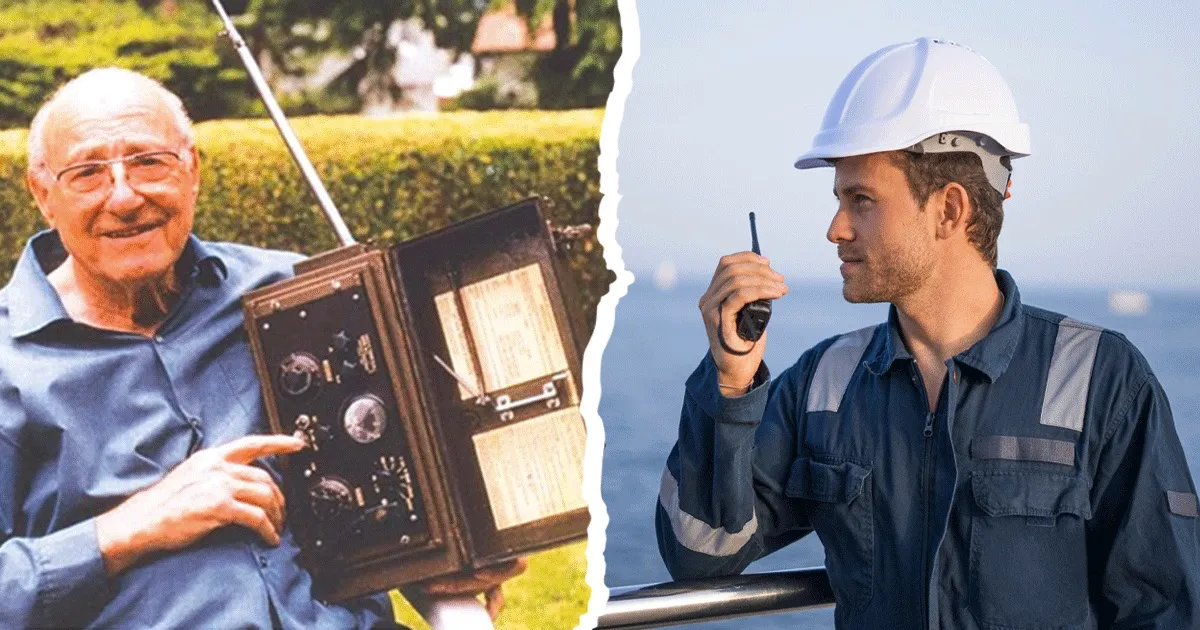From Rugged Relic to Niche Use: The Decline of Walkie-Talkie Headsets in Business Communication
Once a ubiquitous symbol of on-the-go communication, the walkie-talkie headset is fading from the business landscape. While these rugged devices served us well for decades, advancements in technology have rendered them increasingly obsolete. Let’s explore the reasons behind this decline and the rise of more versatile solutions.
A Walkie-Talkie Through History
The story begins in 1937, with the invention of the first walkie-talkie by Canadian engineer Don Hings. These early models were bulky, weighing over 5 pounds, but they revolutionized battlefield communication during World War II.
Fast forward to the 1970s. Miniaturization made walkie-talkies accessible to the public, and by the 90s, they were even marketed to children. Waterproof options ensured durability, and brands like Motorola, Kenwood, and ICOM dominated the market.
The Cracks Start to Show
Despite their popularity, walkie-talkies had limitations. Lack of encryption meant anyone with a compatible device could listen in. Limited channels created interference issues, and their range was restricted. Battery life, especially before rechargeable options, posed another challenge.
The rise of mobile phones in the 2000s delivered a significant blow. Mobile coverage improved, offering wider reach and easier communication beyond walkie-talkie limitations. Interference, once a minor annoyance, became a major concern as users sought more reliable solutions.
Security Concerns and Costly Limitations
Security was another major drawback. Anyone with the same brand of radio could potentially access your channel. Even with squelch codes (a lock-like feature), customized codes were rare, leaving communication vulnerable. This issue persists, with some incidents of jamming or hijacking emergency frequencies.
Walkie-talkie limitations extended to cost. Replacing heavy-duty waterproof models wasn’t cheap, and trunking services, allowing shared frequencies without interference, were expensive additions. Additionally, certain building materials like Low-E glass could hinder reception, rendering them ineffective in some environments.
A World of Accessories (But Still Limited)
While a variety of accessories like earpieces were available, compatibility issues arose. Many brands used proprietary jacks, forcing users to purchase specific, often expensive, options. Bluetooth walkie-talkies offered some relief, but battery life remained a concern for connected headsets.
The Mobile Phone Revolution
The true game-changer was the mobile phone. It offered similar reception within urban areas, with the added benefit of reaching people outside the walkie-talkie’s range. Mobile phones generally had better reception inside buildings, thanks to Wi-Fi integration, and were less susceptible to interference.
Smartphones further eroded the walkie-talkie’s relevance. They offered features like texting, video calls, and internet access, functionalities absent in walkie-talkies. From a business perspective, smartphones provided a more comprehensive solution.
Beyond Mobile Phones: The Rise of Unified Communications
Mobile phones weren’t the only contenders. Internal phone systems utilizing data-based networks and DECT (Digital Enhanced Cordless Telecommunications) offered superior call quality, rendering walkie-talkies obsolete in many scenarios. Hands-free headsets and ruggedized DECT phones provided a practical and versatile alternative for staff.
A Niche Use Case Remains
Despite these advancements, walkie-talkies still hold a niche value. Their ability to facilitate simultaneous communication among multiple parties remains useful. This is particularly relevant for tasks requiring rapid group updates.
Short-range radio communication can also be advantageous in areas with poor mobile phone signal. Emergency services, search and rescue teams, and workers in remote locations may still find them valuable tools.
The Future: Unified Communication Systems Take Over
In most cases, UCaaS (Unified Communications as a Service) solutions offer a more effective alternative to walkie-talkie headsets. These systems eliminate the need for separate investments and provide features like broadcast messaging (replacing “x-hoppers” for retailers), hardware as a service (hassle-free maintenance), and integration with doorphones and cameras. They also offer superior security and prevent jamming or false information breaches.
For video communication, a UCaaS system based on smartphones or tablets becomes the clear choice.
The Final Signal: A Fading Legacy
As technology evolves, the walkie-talkie headset is becoming a relic of the past. While they hold a place in specific situations, unified communication systems offer greater flexibility, functionality, and security. With the ubiquity of mobile phones and the power of UCaaS solutions, the walkie-talkie’s reign in business communication has undoubtedly come to an end.

